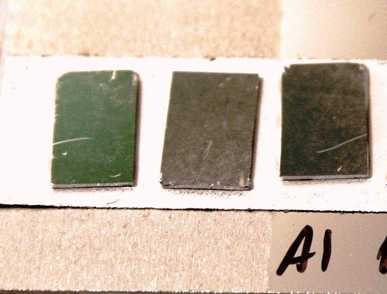The Lawrence Livermore National Laboratory (LLNL) Materials Engineering Division (MED) research team has made the breakthrough by experimenting with black metals. These nanostructured metals are designed to have low reflectivity and high absorption of visible and infrared light.
The MED research team recently published their black metals research results in an article in Applied Physics Letterstitled Plasmonic Black Metals in Resonant Nanocavities.
Authored by MED physicist and research team member Mihail Bora, the article details the work of the nanophotonics and plasmonics research team led by LLNL engineer Tiziana Bond.

The team’s concept of black metals are not classic metals but can be thought of as an extension of the black silicon concept. When silicon is treated in a certain way, such as being roughened at the nanoscale level, it traps light by multiple reflections, increasing its solar absorption. This gives the silicon a black surface that’s able to better trap the full sun’s wavelength spectrum.
Similarly, black metals are produced by some sort of random nanostructuring - either in gold or silver - without guaranteeing a full, reliable and repeatable full solar absorption.
However, Bond’s team is said to have developed a method to improve and control the absorption efficiency and basically turn the metals as black as they want, allowing them to increase, on demand, the absorption of a higher quantity of solar wavelengths. Her team built nanopillar structures that are trapping and absorbing all the relevant wavelengths of the entire solar spectrum.
This new LLNL technology could one day be used in the energy harvesting industry such as PV. By incorporating metallic nanostructures with strong coupling of incident light, broad spectral and angular coverage, the LLNL team is providing a path for more efficient photovoltaics and thermovoltaics (a form of energy collection) by means of plasmon-exciton conversion, according to Bond and Bora.




Nanogenerator consumes CO2 to generate electricity
Whoopee, they've solved how to keep a light on but not a lot else.